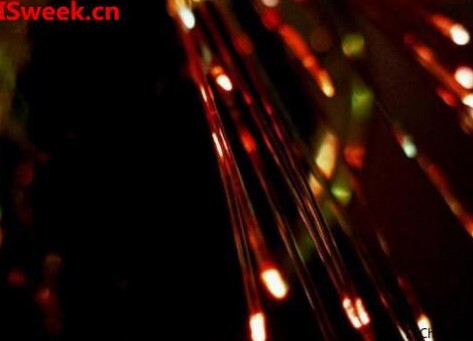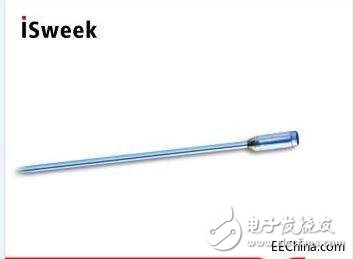According to the different properties and parameters of the modulated light waves, these two types of fiber optic sensors can be further divided into intensity modulated fiber optic sensors, phase modulated fiber optic sensors, frequency modulated fiber optic sensors, polarization state modulated fiber optic sensors, and wavelength modulated fiber optic sensors. 1) Intensity modulation type optical fiber sensor The basic principle is that the physical quantity to be measured causes the change of the transmitted light intensity in the optical fiber, and the measurement to be measured is realized by detecting the change of the light intensity. The light with the intensity of I emitted by the constant light source is injected into the sensor head. In the sensor head, the intensity of the light changes under the action of the measured signal, that is, it is modulated by the external field, making the envelope of the output light intensity and The shape of the measured signal is the same, the output current measured by the photodetector is also modulated in the same way, and the signal processing circuit detects the modulated signal again to obtain the measured signal. The advantages of this type of sensor are simple structure, low cost, and easy to implement. Therefore, it was developed and applied earlier. Now it has been successfully applied to displacement, pressure, surface roughness, acceleration, clearance, force, liquid level, vibration, radiation, etc. measuring. There are many ways of intensity modulation, which can be roughly divided into reflection type intensity modulation, transmission type intensity modulation, light mode intensity modulation, refractive index and absorption coefficient intensity modulation, and so on. Generally, reflection type intensity modulation, transmission type intensity modulation, and refractive index intensity modulation are called external modulation type, and light mode is called internal modulation type. However, due to the limitation of the principle, it is easily affected by light source fluctuations and connector loss changes, so this kind of sensor can only be used in occasions with small interference sources. 2) Phase modulation type optical fiber sensor The basic principle is: under the action of the measured energy field, the phase of the light wave in the optical fiber changes, and then the interferometric technique is used to convert the phase change into the light intensity change, thereby detecting the physical quantity to be measured. The advantages of phase modulation optical fiber sensors are extremely high sensitivity, large dynamic measurement range, and fast response speed. The disadvantage is that the requirements for the light source are relatively high, and the requirements for the precision of the detection system are relatively high, so the cost is correspondingly high. . At present, the main application fields are: sound, pressure or vibration sensors using photoelastic effect; current and magnetic field sensors using magnetostrictive effect; electric field and voltage sensors using electrostriction; rotation angular velocity sensors using Segnak effect (Fiber Optic Gyro) and so on. 3) Frequency modulation type optical fiber sensor The basic principle is to use the Doppler frequency shift effect of light reflected or scattered by a moving object to detect its moving speed, that is, the light frequency is related to the movement state between the light receiver and the light source. When they are relatively stationary, they receive the oscillation frequency of the light; when there is relative movement between them, the received light frequency and its oscillation frequency are frequency shifted, and the magnitude of the frequency shift is related to the magnitude and direction of the relative motion speed. Therefore, this kind of sensor is mostly used to measure the speed of the object. There are other methods of frequency modulation. For example, the absorption and fluorescence of certain materials change in frequency with external parameters, and the Brillouin and Raman scattering caused by quantum interaction are also a frequency modulation phenomenon. Its main application is to measure fluid flow. Others include gas sensors that use Raman scattering when substances are illuminated by strong light to measure gas concentration or monitor atmospheric pollution; temperature sensors that use photoluminescence. 4) Polarization modulated optical fiber sensor The basic principle is to use the change of the polarization state of light to transmit the information of the measured object. A light wave is a transverse wave, and its light vector is perpendicular to the direction of propagation. If the light vector direction of a light wave is always the same, but its magnitude changes with the phase, such light is called linearly polarized light. The plane formed by the light vector and the propagation direction of the light is the vibration plane of linearly polarized light. If the size of the light vector remains unchanged, and its direction rotates uniformly around the propagation direction, the track at the end of the light vector is a circle, such light is called circularly polarized light. If the size and direction of the light vector are changing regularly, and the end of the light vector rotates along an ellipse, such light is called elliptically polarized light. Using the polarization properties of light waves, polarization-modulated fiber optic sensors can be made. In many fiber optic systems, especially those containing single-mode fiber, polarization plays an important role. Many physical effects can affect or change the polarization state of light, and some effects can cause birefringence. The so-called birefringence phenomenon is the phenomenon that for some crystals whose optical properties vary with the direction, one beam of incident light is often decomposed into two beams of refracted light. The phase delay of light passing through the birefringent medium is a function of the polarization state of the input light. The polarization state modulation fiber optic sensor has high detection sensitivity, can avoid the influence of the intensity of the light source, and the relative phase modulation fiber optic sensor has a simple structure and is easy to adjust. Its main application areas are: current and magnetic field sensors using the Faraday effect; electric and voltage sensors using the Paul effect; pressure, vibration or sound sensors using the photoelastic effect; temperature, pressure, and vibration sensors using birefringence. At present, the most important thing is to monitor strong currents. 5) Wavelength modulation type optical fiber sensor The traditional wavelength modulation optical fiber sensor is realized by using the spectral characteristics of the sensing probe to change with the external physical quantity. Such sensors are mostly non-functional sensors. In the wavelength modulated fiber optic probe, the fiber is simply used as a light guide, that is, the incident light is sent to the measurement area, and the returned modulated light is sent to the analyzer. The key to optical fiber wavelength detection technology is the good performance of the light source and spectrum analyzer, which has a decisive influence on the stability and resolution of the sensing system. Optical fiber wavelength modulation technology is mainly used in the fields of medicine and chemistry. For example, the analysis of human blood gas, PH value detection, chemical analysis of indicator solution concentration, phosphorescence and fluorescence phenomenon analysis, black body radiation analysis and Fabry-Perot filter, etc. At present, the wavelength modulation type optical fiber sensor mainly refers to the fiber Bragg grating sensor (FBG). Finally, I will introduce three types of optical fiber sensors imported from abroad by Gongcai.com. The first is the optical fiber temperature sensor-FOT-L-SD. This is a type of optical fiber temperature sensor that is very suitable for measuring temperature in extreme environments. Such extreme environments include low temperature, nuclear environment, microwave and high-intensity RF. FOT-L combines all the excellent characteristics you expect from an ideal sensor body. Therefore, even in extreme temperatures and unfavorable environments, this type of sensor can still provide high-precision and reliable temperature measurement. Then there is the optical fiber pressure sensor-FOP-M, FOP-M is specially designed for the high temperature field of aerospace and national defense. FOP-M can withstand high temperatures of 150°C (302°F). Unlike most traditional pressure sensor designs, FOP-M uses a unique deflection design of silicon crystal diaphragm. FOP-M is the best choice for harsh environment pressure measurement. The sensor is completely immune to electromagnetic and radio frequency interference, and its inherent reliability is suitable for dangerous and high-temperature environments. Finally, the fiber optic refractive index sensor-FRI, is a unique sensor design based on the length change of the Fabry-Perot optical cavity of the flushing liquid to accurately determine the refractive index of the fluid. The length of the flushing Fabry-Perot optical cavity is proportional to the refractive index of the fluid sample. Therefore, the refractive index can be determined by measuring the length of the Fabry-Perot cavity using white light interference technology. Even in the harsh environment of temperature, EMI, humidity and changeable simple calibration, the optical fiber signal conditioner still has the ability to measure the refractive index. The FRI optical fiber refractive index sensor provides a better and more reliable refractive index measurement for existing applications in the industry. At the same time, the sensor also has a new expansion capability for continuous online monitoring of fluid refractive index under severe conditions. 2835 240 Led Single Color,Single Color Pixel Led Light,Single Red Led ,Single Colour Led NINGBO SENTU ART AND CRAFT CO.,LTD. , https://www.lightworld-sentu.com


